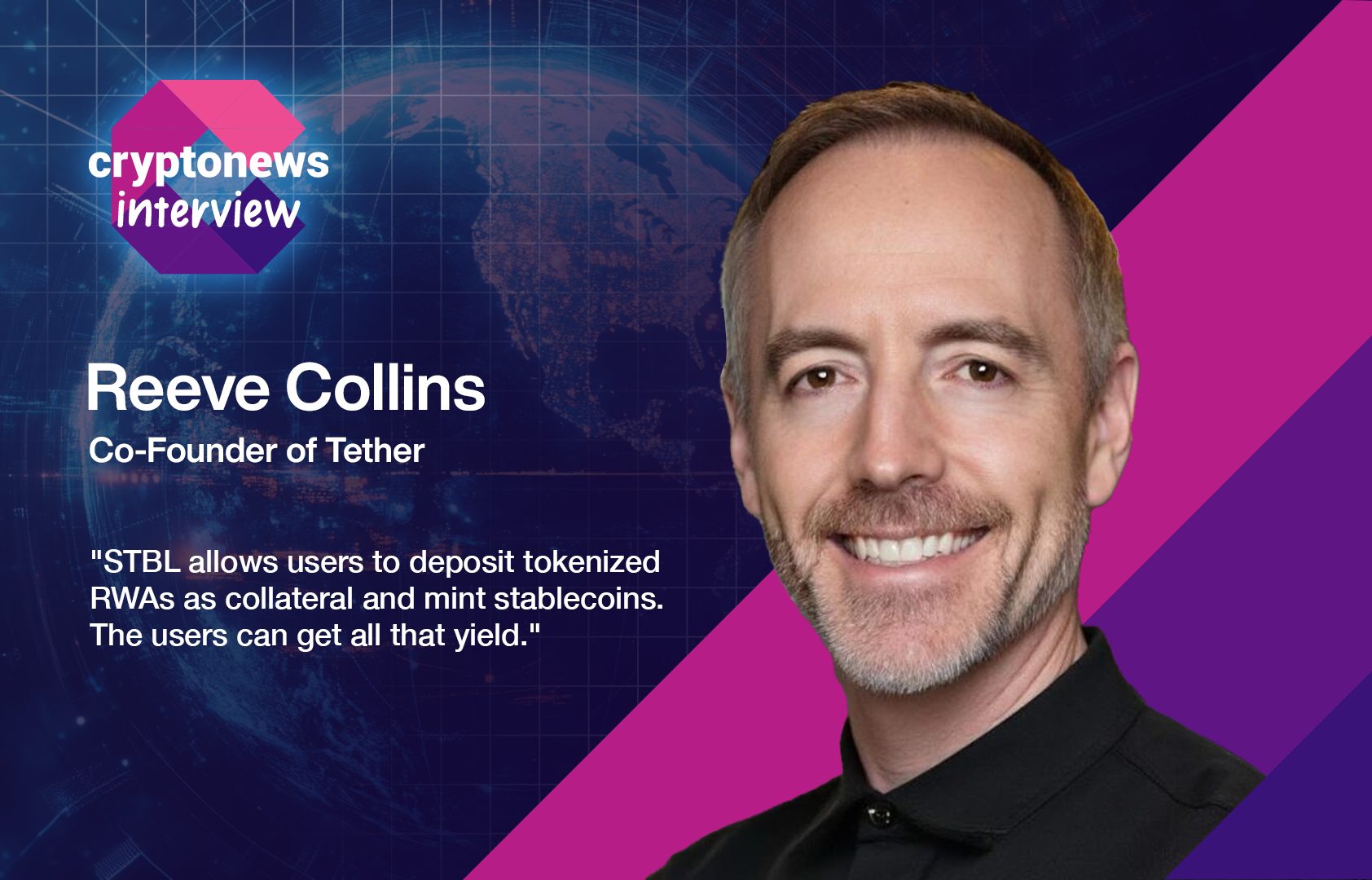
Stablecoins took centre stage at Token2049 last week in Singapore, with Tether co-founder Reeve Collins emphasizing that “all currencies” would become stablecoins by 2030. After laying the foundation for Tether, the world’s most widely used stablecoin, Collins is now building what he calls ‘Stablecoin 2.0.’
In an exclusive interview with Cryptonews, he shares insights on how his new governance token, STBL, aims to disrupt traditional stablecoin models.
STBL and the Rise of “Stablecoin 2.0”
Unlike conventional stablecoins, where a centralized company issues the token and captures all associated yields, STBL allows users to deposit tokenized real-world assets (RWAs) as collateral and mint stablecoins, thus earning yields directly.
“In the traditional model, you give Tether or Circle a dollar. They would buy a treasury. But now that treasuries are on-chain, the user can buy the treasury and post it as collateral.”
“The users can get all that yield,” Collins breaks it down with palpable excitement.
He further said that the STBL platform splits the RWA into two tokens. “A security token, which is a yield-bearing NFT that holds the dollar amount, yield, and duration. And then it gives you USST, which is the stablecoin backed by the principal.”
The result is identical to traditional stablecoins, but with a revolutionary difference. “Since you put the money into the network to mint it, you get all the reward,” he said, adding that the users are the issuers.
STBL’s Compliance and Regulatory Landscape
Collins stressed that regulation is a crucial part of STBL’s design. “It’ll be regulated in the same way as traditional stablecoins,” he confirmed. The USST will fall under frameworks like the EU’s MiCA and the US GENIUS Act for stablecoins.
Besides, the STBL is “over-collateralized” and distinct from yield-bearing algorithmic stablecoins, as it “strips” the yield, making it a security.
When asked about institutional partners, including BlackRock and Franklin Templeton, involved in STBL’s real-world asset collateralization, Reeve Collins stated that there are lots of companies that are rushing into tokenize.
“We are collaborative layer. We want to work with all of them… It’s just the natural extension to any tokenised treasury,” he noted. “If you’re gonna hold one, you might as well get a stablecoin while you’re at it. It’s like a gift with purchase.”
Addressing the current regulatory momentum, the Tether creator said that the passing of laws like GENIUS paves the way for global acceptance of stablecoins. “The reason why that’s so powerful… and all the large financial institutions get involved, is because, it’s lucrative.”
AI Frontier: The End of Brand, The Dawn of Performance
Reeve Collins believes that Artificial Intelligence is a “massive revolution” that would change the game across the board.
“In the future, you’re going to talk to your wallet,” Collins said. “You’re gonna say, I want to do this specific transaction. And it’ll rout it the most efficient way, the quickest, the fastest, the most profitable, or the least expensive.”
He predicts that there would be a point where brands and marketing don’t matter. It’s just gonna be performance and the ability to execute on transactions that will matter, he added.
“People, like, go into Twitter and say, Oh, put all your money in this defi pool, or here’s the new token that does X, Y, and Z, or this… Don’t put your money into it, just because 3,000 people on Twitter told you to, right? So AI will be able to at least do all of that research for you and sift through the garbage.”
However, he warned that despite AI’s potential, people need to be aware that they can’t trust anything, which is “an unfortunate and sad reality that we’re entering into.”
https://cryptonews.com/exclusives/from-tether-to-stbl-reeve-collins-charts-the-future-of-stablecoins-and-web3/